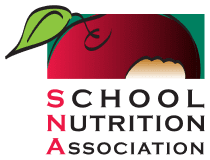 Welcome to Season 3, Episode 4
Welcome to Season 3, Episode 4
Did you know that even slicing a cucumber is considered processing? In this episode of “School Food for Thought,” host Danielle dives into the surprising world of processed foods in school nutrition. Joining Danielle are Shannon Solomon from Aurora Public Schools and Laura Bruno, a registered dietitian and CEO of Buena Vista Foods, to unpack the complexities of processed foods.
Together, they explore the balance between scratch cooking and processed options, highlighting the crucial role partnerships with manufacturers play—especially during challenges like the COVID-19 pandemic. This episode is packed with actionable ideas and innovative solutions for providing nutritious school meals while fostering a deeper understanding of what “processed food” really means. Tune in for a fresh perspective on this essential topic!
Host: Danielle Duron Baron, MBA, CAE – VP of MarCom and Industry Relations
Speakers: Shannon Solomon (Aurora Public Schools); Laura Bruno (CEO, Buena Vista Foods)
Sponsored by
Highlights from the “School Food for Thought” Podcast
Processed foods are a staple in many school meal programs, but finding the right balance between scratch cooking and pre-prepared options is key to delivering meals that are nutritious, cost-effective, and appealing. By rethinking what “processed” really means and fostering collaboration, school nutrition professionals can navigate these complexities with creativity and care.
In this episode of “School Food for Thought,” Shannon Solomon from Aurora Public Schools and Laura Bruno, CEO of Buena Vista Foods, share practical strategies for leveraging processed foods while maintaining quality and nutrition.
Redefining Processed Foods
Not all processing is bad. As Shannon explains, even slicing a cucumber counts as processing. The focus should be on using minimally processed ingredients, such as pre-washed lettuce or frozen vegetables, while limiting ultra-processed items like sugary snacks.
Balancing Scratch Cooking and Processed Options
Scratch cooking isn’t always practical, especially with limited staff and budgets. Shannon shares how her team uses pre-prepared options like whole-grain hamburger buns to save time without sacrificing quality.
“Speed scratch” cooking, which blends scratch preparation with pre-made ingredients, can also improve efficiency. For example, Shannon’s team uses pre-mixed egg products to streamline breakfast preparation.
Partnering with Manufacturers
Strong relationships with manufacturers can lead to customized solutions that fit a school’s needs. Shannon highlights how her district partnered with a local commissary to produce high-quality items based on their recipes. Laura adds that during the pandemic, manufacturers stepped up to help schools overcome challenges, strengthening these collaborations.
Engaging Students and Staff
Involving students and staff in menu planning fosters creativity and enthusiasm. Shannon’s team uses flavor stations with customizable toppings like sauces and herbs, empowering students to personalize their meals. Feedback from student advisory councils also helps ensure meals are well-received.
Key Takeaways
- Focus on Balance: Combine scratch cooking and processed foods to optimize quality and efficiency.
- Customize Meals: Let students personalize their meals with toppings and sauces.
- Collaborate: Build strong partnerships with manufacturers for tailored solutions.
- Engage the Team: Include staff and students in the menu planning process.
By embracing these strategies, schools can navigate the challenges of processed foods while providing meals that students love.
Watch the full episode on YouTube for more insights and practical tips!



